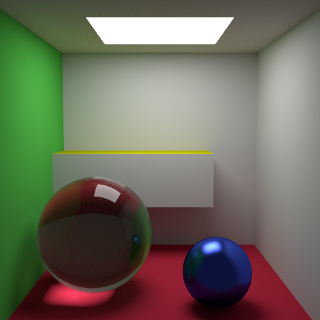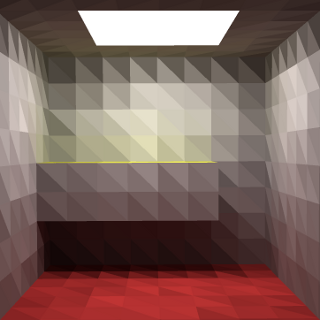Global Illumination and Image-Based Rendering
Semester: |
SS 2016 |
Type: |
Lecture |
Lecturer: |
|
Credits: |
|
Contact: |
rendering@cs.rwth-aachen.de |
Find a list of current courses on the Teaching page.


In this lecture we consider techniques for the generation and synthesis of photo-realistic images. The most important part of this process is the simulation of light distribution. The following are the main topics covered by this lecture:
Global Illuminaton:
- Rendering Equation
- Radiosity Approach
- Monte-Carlo-Methods
- Photon Mapping
Image-Based Rendering:
- Lightfields and their Generation
- Rendering and Compression
- The Lumigraph
- Image Retargeting
The lecture will be suplemented by a practical exercise course where several rendering techniques will be implemented.
Course Material:
Exercises and learning material will be in the L2P room. Register via campus or send an email with name, matr. number, rwth-email and campus user name to the above contact.
Literature:
- Preliminary Lecture Notes, pp. 107-end
- Matt Pharr, Greg Humphreys: Physically Based Rendering from Theory to Implementation (2nd edition)
- Philip Dutre, Kavita Bala, Philippe Bekaert: Advanced Global Illumination
- Henrik W. Jensen: Realistic Image Synthesis Using Photon Mapping
- P. Debevec et al.: Image-Based Modeling, Rendering, and Lighting, SIGGRAPH 99 Course Notes
Prerequisites:
- Basic Techniques in Computer Graphics is recommended, but not necessary.
Notes:
-
The first lecture will take place on the 14th of April, the first exercise on the 20th of April. All future announcements will only be published via the L2P room.
-
Regarding OpenFlipper: Do not mix Qt versions: First, you must have only one version of Qt installed. Furthermore, you must not mix debug and release builds. If your Qt was built in release mode (default e.g. on MacPorts), you must build OpenFlipper in release mode as well. You can tweak this using cmake or ccmake. OpenFlipper for Windows can be used with Visual Studio >= 2008.

